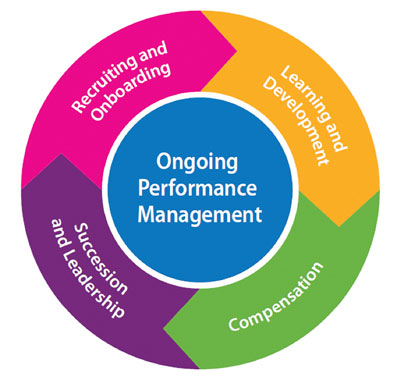
Without question, golf course management professionals face myriad issues on a daily basis. But are they spending enough time on the development and growth of their teams?
It’s no secret that employee turnover can have a huge financial impact on your golf facility. A study conducted by the Society for Human Resource Management reported that, on average, it can cost an employer six to nine months of the previous employee’s salary to recruit, onboard and train a new employee. For an employee making $45,000 per year, that equates to $22,500 to $33,750 in lost productivity.
This article offers insights into recent performance management trends to help you engage, inspire and, hopefully, retain your staff.
Annual, traditional performance reviews are a thing of the past
Of the 2,080 working hours in every year, often only one hour or less is spent giving meaningful feedback to employees. Employees continue to be a golf facility’s largest asset, so it is essential to invest the appropriate amount of time in coaching, counseling and developing them.
Trends show that employers now hold meaningful, coaching conversations two, three and even four times per year. Ongoing performance management and continual feedback should assist you in retaining key personnel.
Focus on the future
Let’s be honest: Few people are fans of performance management or receiving feedback. This is primarily because of the negative connotation associated with the words “evaluation” and “assessment.” However, if you shift the conversation from the past to the future, it can completely change an employee’s mindset.
It’s difficult to remember what happened yesterday, not to mention 12 months ago, so being evaluated on something that happened almost a year ago is not fair to the employee, and changing past performance is impossible. Rather, focus the conversation around goals and objectives for the next six months and provide real-time feedback. This should result in a more engaged, committed and productive workforce.
Coach; don’t manage
At first glance, the differences between these two words — “coaching” vs. “managing” — may seem insignificant, but if you dive deeper into the meaning of each, you’ll uncover the power of leadership.
There are two types of leadership: transactional and transformational. Transactional leaders abide by processes and rules, and oversee the completion of routine tasks. Transformational leaders motivate, inspire and serve as role models for others. Don’t get me wrong — both are needed within an organization. But when it comes to performance management, these contrasting personalities set the tone for the future of your facility.
Transformational leaders genuinely care about the personal and professional development and growth of every employee, and they provide guidance and career advice. It’s no different from a coach on any sports team who trains and develops players to win games. The game in this example is the overall health and sustainability of your course and facility.
You need to begin identifying and developing a talent pipeline to ensure your team is armed with the necessary knowledge, skills and abilities to assume higher-level positions. Any transformational leader will attest to the gratification of seeing a mentee ascend through the ranks.
Ultimately, performance management shouldn’t be a daunting, time-consuming process that creates anxiety for all parties. It should be a healthy conversation that clearly outlines expectations and opportunities for growth.
And, yes, this sounds simple — and it should. The days of lengthy, cumbersome performance management reviews are a thing of the past. Use technology to create custom templates and help streamline the process for everyone involved. Well-developed performance management practices can pay huge dividends on the retention of your facility’s largest asset: people.
Nate Scott, SHRM-SCP (Society for Human Resource Management - Senior Certified Professional), is GCSAA’s director of human resources.